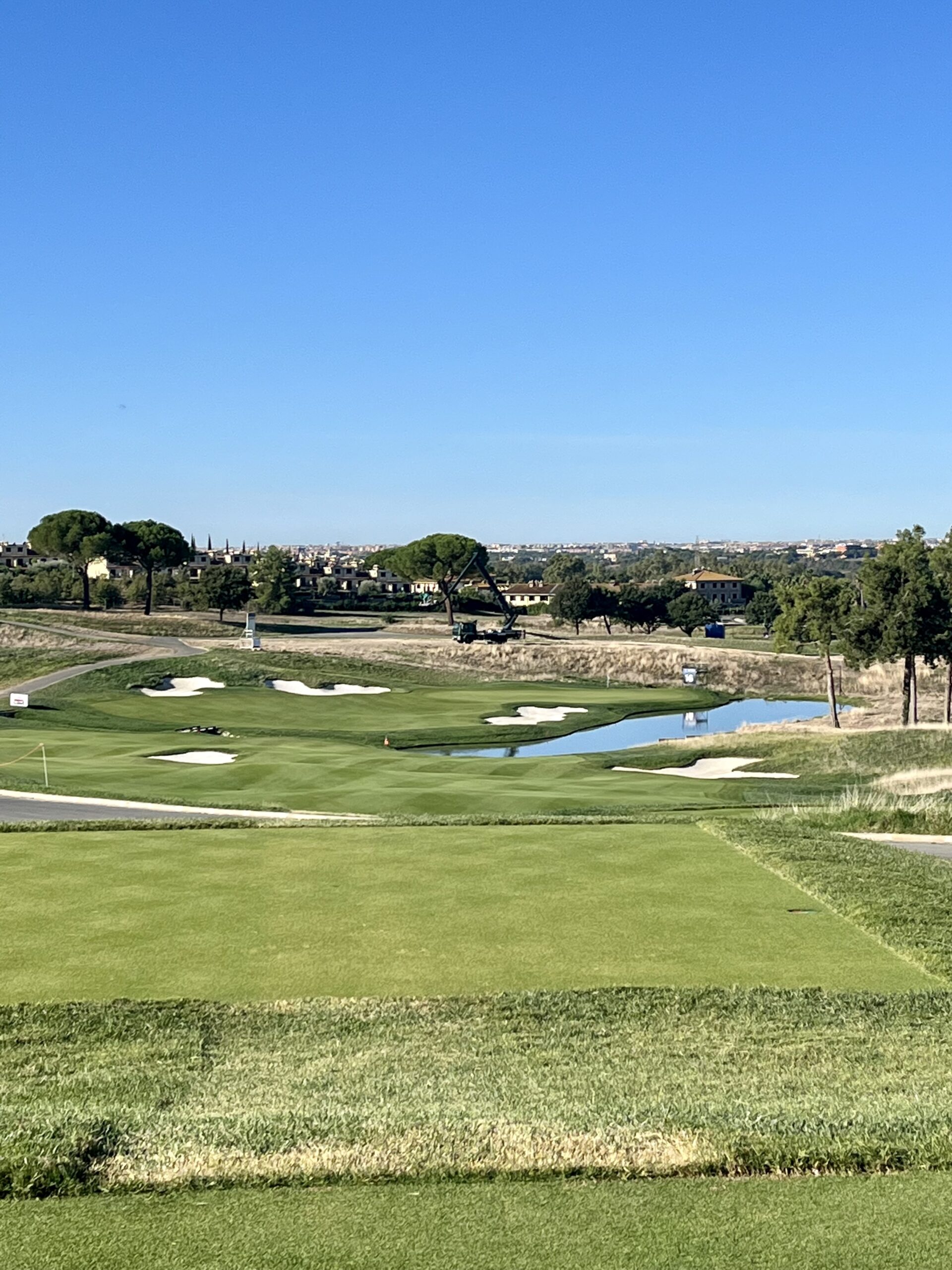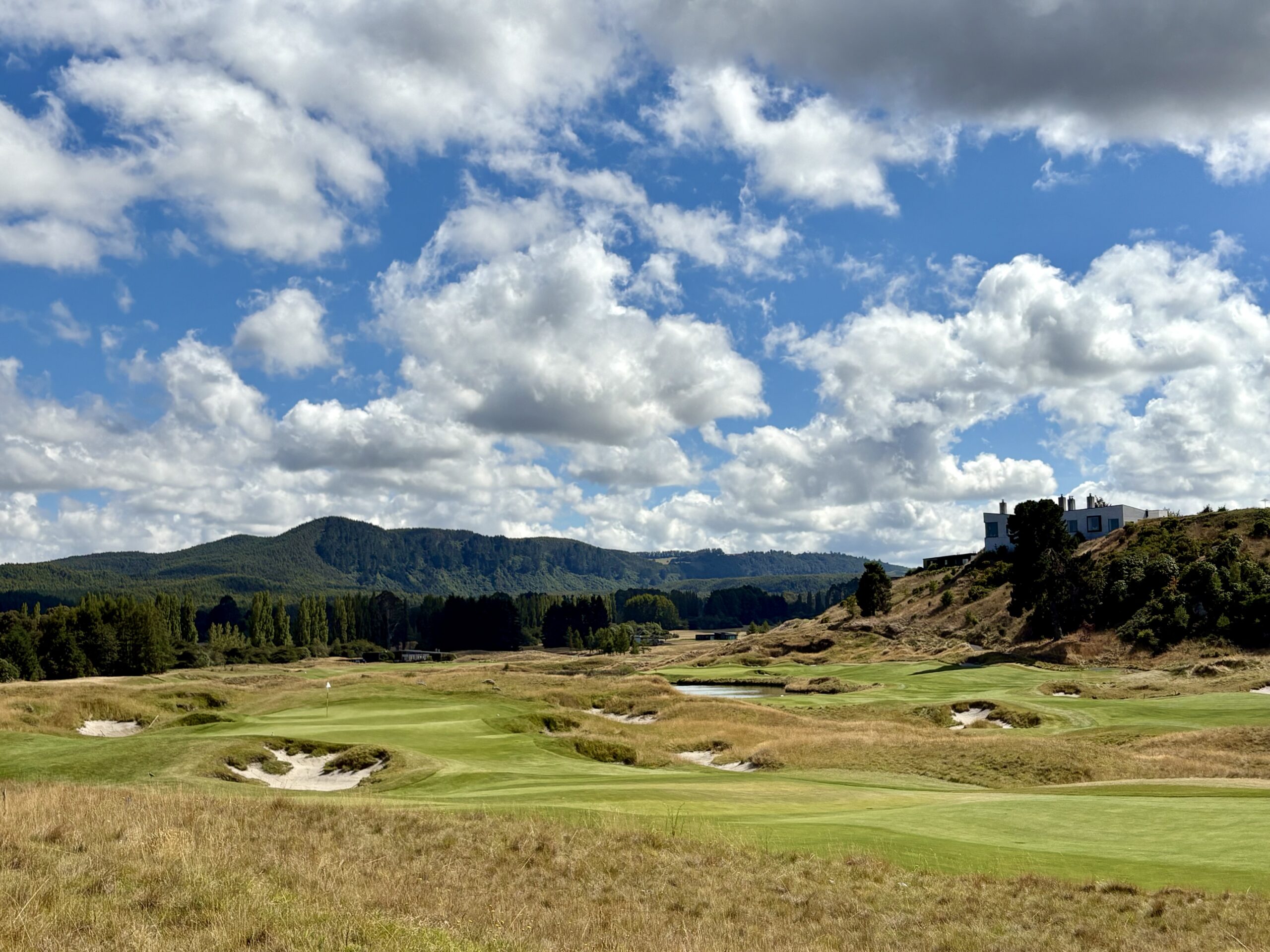Words: Paul Prendergast
Photo: Golf Plus Media
| Most who have been been fortunate to have visited at this time will agree that Rome in September is just magical. Just out of the peak of the summer heat, (ever so) slightly less tourists in town and a chance to spend some time just wandering and soaking up the Eternal City that is, quite frankly, magical all 12 months of the year. Such was the experience for my wife and I last year when we booked in for a full week in Rome a good eight months ahead of time. It took quite some time thereafter for it to occur to me that our arrival would coincide with the weekend action at the 2022 Italian Open at this year’s Ryder Cup venue, Marco Simone Golf & Country Club. Surely this was an opportunity not to be missed when you live so far away and so it was, with my wife’s blessing, that I was able to arrange to attend for the final round to get a sense of what the U.S. and European combatants would face 12 months later. When it later transpired that Rory McIlroy, Matt Fitzpatrick, Viktor Hovland, Tyrrell Hatton and eventual champion Robert Macintyre had committed to join skipper Luke Donald and his deputies Thomas Bjorn, Francesco and Eduardo Molinari in the field, it certainly felt like a inspired decision to head out there. McIlroy and Co. obviously drew most of the gallery’s attention, so it was fantastic to be able to slip out before they teed off in the final groups and explore a golf course that is an arduous trek in places, set among the hills to the east of the city. It was interesting that both U.S. Captain Zach Johnson and Assistant Stewart Cink recently commented on how hilly and tiring a walk it will be at Marco Simone, after their recent scouting trip to Rome with the U.S. team. Far from the madding crowds, I was able to take up vantage points behind tees and greens to see how a field of DP World Tour players tackled the challenges presented. A quick catchup with fellow Aussies Lucas Herbert and Jason Scrivener, before returning to the clubhouse area to slip in for a barista-served espresso and ‘perhaps’, something else delicious to eat from the superb repast on offer in the media centre. Emerging for a quick chat with the legendary Fanny Sunesson, who was a late callup to Victor Perez’s bag while his regular caddie attended a wedding, we watched on in amusement as an ever-more bemused Hatton was drawing a crowd on the practice green over a putt that simply refused to break in the same direction each time he tried it. The amusement quickly shifted to concern when back out on course, I was nearly compelled to offer my caddy services to England’s Callum Shinkwin for the remainder of the round when his veteran bagman suddenly hit the deck on the 3rd tee with debilitating back spasms. With his playing partners and caddies striding down the hole oblivious to the unfolding drama, some amateur chiropractic maneuvering from Shinkwin seemed to save the day, but not without a torrent of unprintable abuse that I can’t ‘unhear’ from the stricken looper about the pain being inflicted. The things you see (and hear) on the grounds at golf tournaments. Anyway, back to the golf course, and the Marco Simone layout has undergone several alterations over recent years, taking player feedback from successive Italian Opens into account, all carefully orchestrated with this Ryder Cup in mind. In terms of the setup for the week, Donald and his team have also relied on analytics to identify ways to attempt to nullify the strengths of the opposition, in this case, their wedge play from 135m/150y in. Following the blueprint of the course setup that led to an emphatic European victory in the 2018 Ryder Cup at Le Golf National, the rough will no doubt be pinched in to challenge the driver off the tee and (attempt) to force players to take more conservative strategies and therefore, longer approaches into greens. The visual contrast of roughs on each hole will be quite stark with the more lush, intermediate cuts just off the fairway leading to taller fescue and paspalum grasses greeting anything straying well off line. In terms of ‘key holes’, it will not surprise me if the following play a significant role in just about every Foursomes, 4-Ball and Singles match during the bi-annual contest being staged from 29 September – 1 October. 5th – 340m par-four. The first of three par-4s at Marco Simone where the tees can be set up to allow opportunities to drive on or near the green, with the pond to the front and left of the green the most glaringly obvious hazard to contend with if they choose to do so. The conventional route of a layup and a wedge/short iron will also yield many birdie opportunities. 7th- 203m par-three. This sturdy par-3 plays downhill to a green that features rolling swales from front to back. Multiple tee areas will allow the hole to be set up to play much shorter than its maximum length. Anything long and left is straight down to water and clearly, is to be avoided at all costs. Can be tough hole in any wind due to an exposed high tee and the wildly undulating green that has earned the ire of many players over several Italian Opens. 9th – 537m par-five. The start of a stretch of four holes that could shape the outcome of many matches, the 9th is an accessible par-5 and one of the few played over relatively flat ground. The large green has various sections to locate pins and provide players with the chance to feed balls in off slopes. Expect plenty of birdies and eagles here over the week. 10th – 414m par-four. A left-to-right par-4 with a creek running up the right of a relatively generous fairway. The approach is sharply uphill to a tilted green guarded by deep traps in front and rear, the latter of which will make for an extremely difficult up and down. No. 10 is routinely ranked as the most difficult hole at the Italian Open. 11th – 301m par-four. Potentially a drivable par-4 although the hole plays straight uphill and across a sea of tall paspalum, a meandering creek and string of bunkers leading up to the green. Left is a ‘no go’ but an errant layup into the long fairway bunker on the right will also make for an awkward approach, especially with a pin tucked in the corners or behind the gaping trap in front of the green. Plenty will no doubt bomb it at the green in the right conditions and rely on their impressive short games to set up many birdie opportunities. 12th – 507m par-five. The teeing grounds are located at the highest point on the golf course, requiring at least a 200m carry over a valley to a fairway guarded by three shallow bunkers on the inside elbow. The hole meanders downhill to a large green that is semi-blind from the right side of the fairway, with a lone tree obscuring the view of the green inside 100m from the green. This hole should provide another birdie or eagle opportunity in the right conditions, but it often plays into or across the breeze. Later in the day when the prevailing wind had dropped, Matt Fitzpatrick came within millimetres of an albatross during the final round in 2022 when his second shot fed in off a side slope and hit the flagstick. 16th- 322m par-four (pictured). A definite ‘risk reward’ downhill short four and no doubt, a feature hole in coverage given its position in the routing and matches. Players will have the option to lay it back short of the centre bunker or go for the green, depending on where the tee and hole are located. Water short and right can spell disaster for those being aggressive, who’s ranks include Rory McIlroy who had his 2022 Open hopes dashed when he found the pond with his tee shot. 2023 Open runner-up Romain Langasque had an eagle-bogey record over the weekend here, the latter of which opened the door for eventual champion, Adrian Meronk. In 2022, I watched Langasque splash a flushed ‘3-wood’ playing alongside a bloke he was no doubt trying to impress in Luke Donald. The Ryder Cup could very well be won and lost based on the outcomes on a hole where no lead will be safe standing on the tee. 17th – 188m par-three. A difficult tee shot to a narrow, tiered green cut into the hillside, creating a dramatic amphitheatre setting. Miss to the left and the ball might kick 20m down into a short grass collection area well below the green level, whereas a miss long and left could find a watery grave. Missing to the right is no bargain either as gnarly rough awaits, in addition to the challenge of an awkward chip shot across the slopes and tiers of the green. Meronk made an incredible up-and-down for par from the right in the final round of the ’23 Open but had to hole a lengthy, sliding putt from off the fringe to do so. 18th – 570m par-five. In favourable conditions, well struck drives will find the downslope of the fairway to bring the green within reach in two for most players. A pond eating into the left of the green is the obvious hazard to contemplate on the approach, although the bunker protecting the entrance to the green will have players considering their options if they are in two minds about going for the green in two. There are some similarities in the routing and steep undulation that are features of this hole with the 18th at the Plantation Course in Kapalua, Hawaii and no doubt, similar opportunities for plenty of drama and excitement as matches conclude. |






